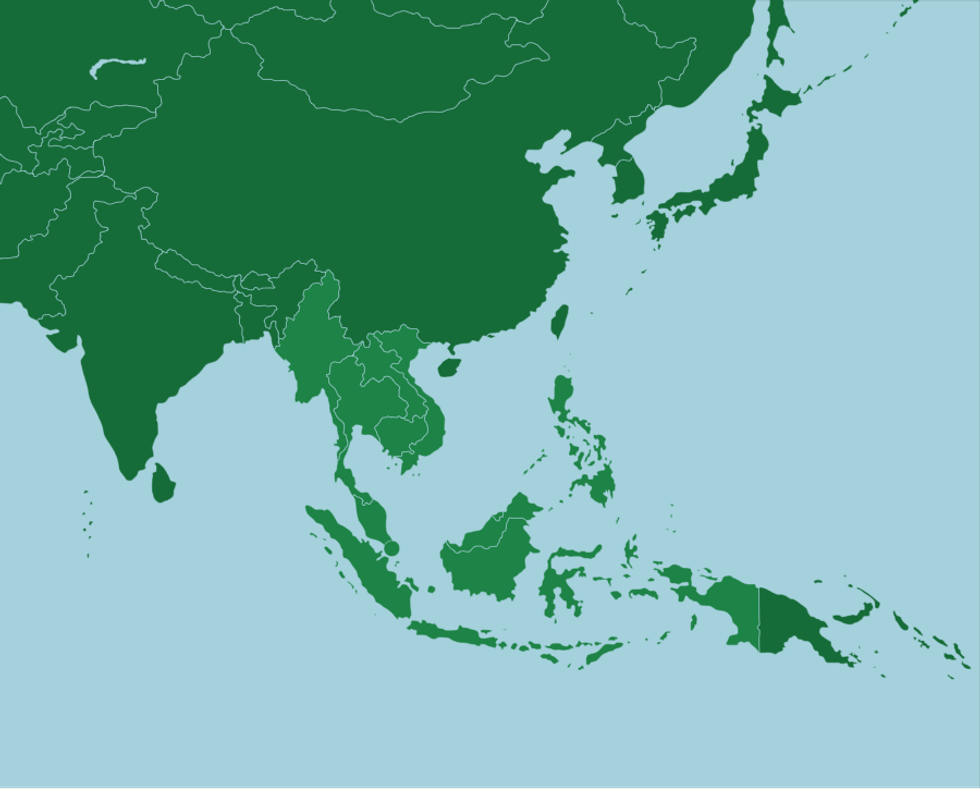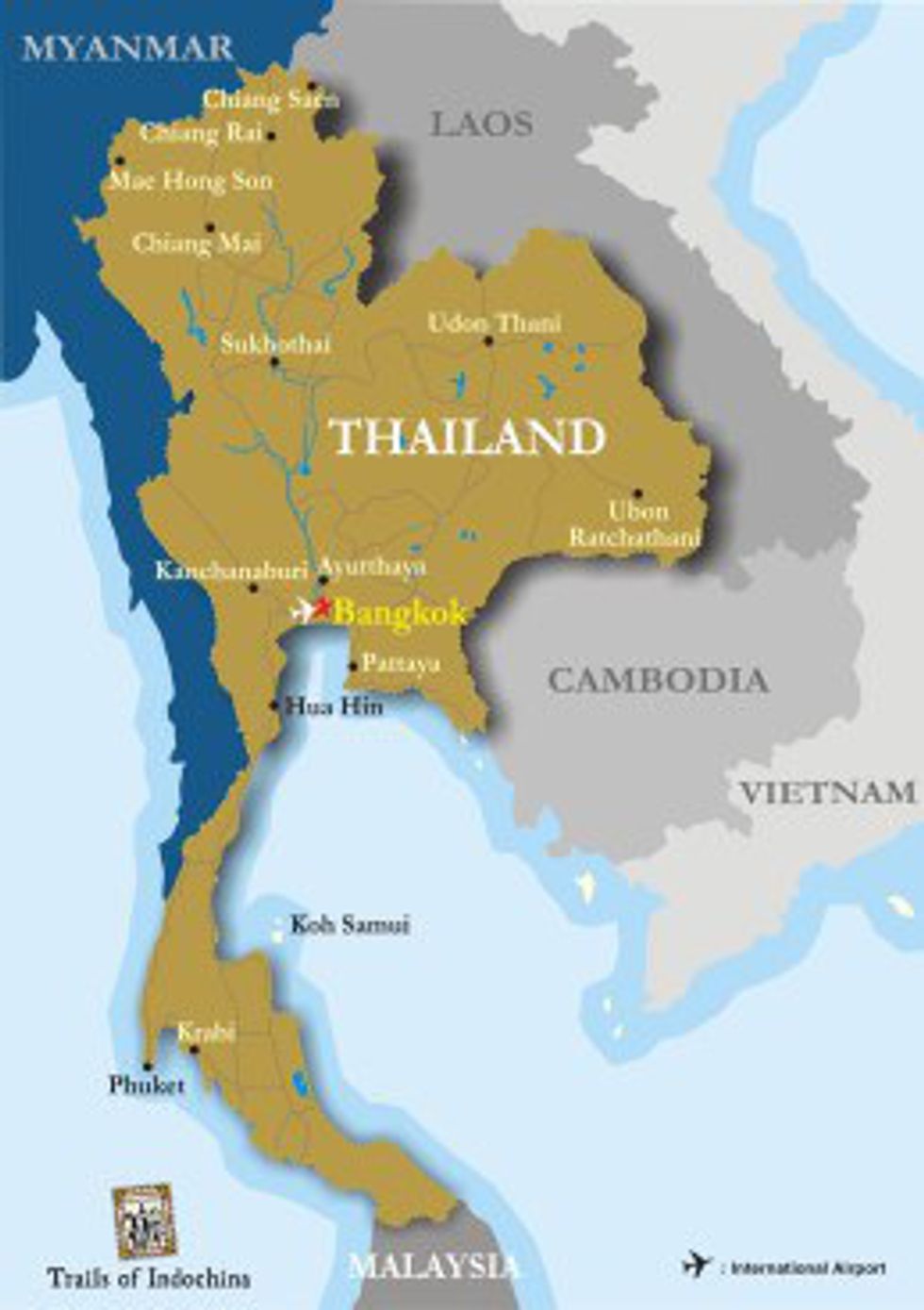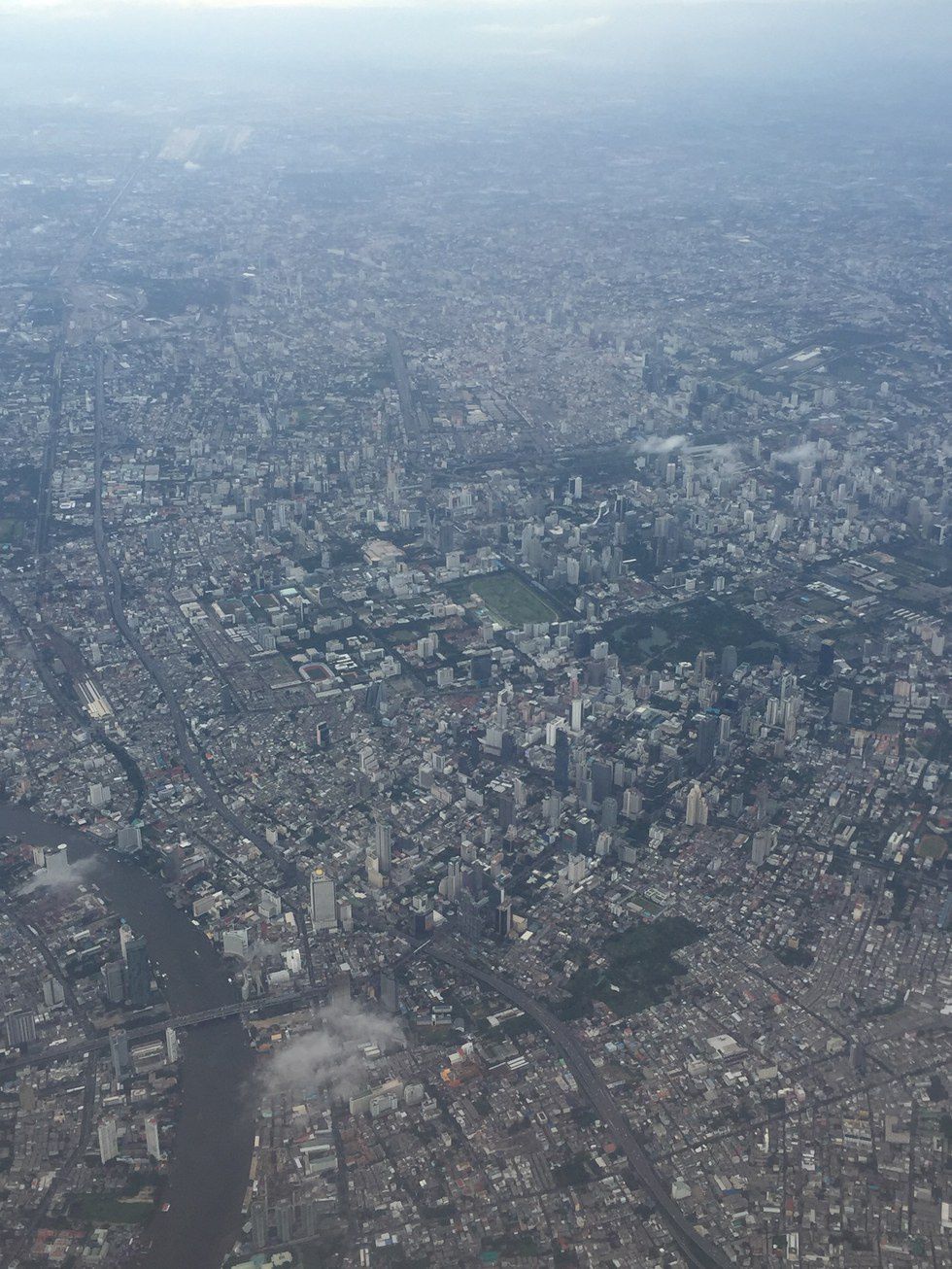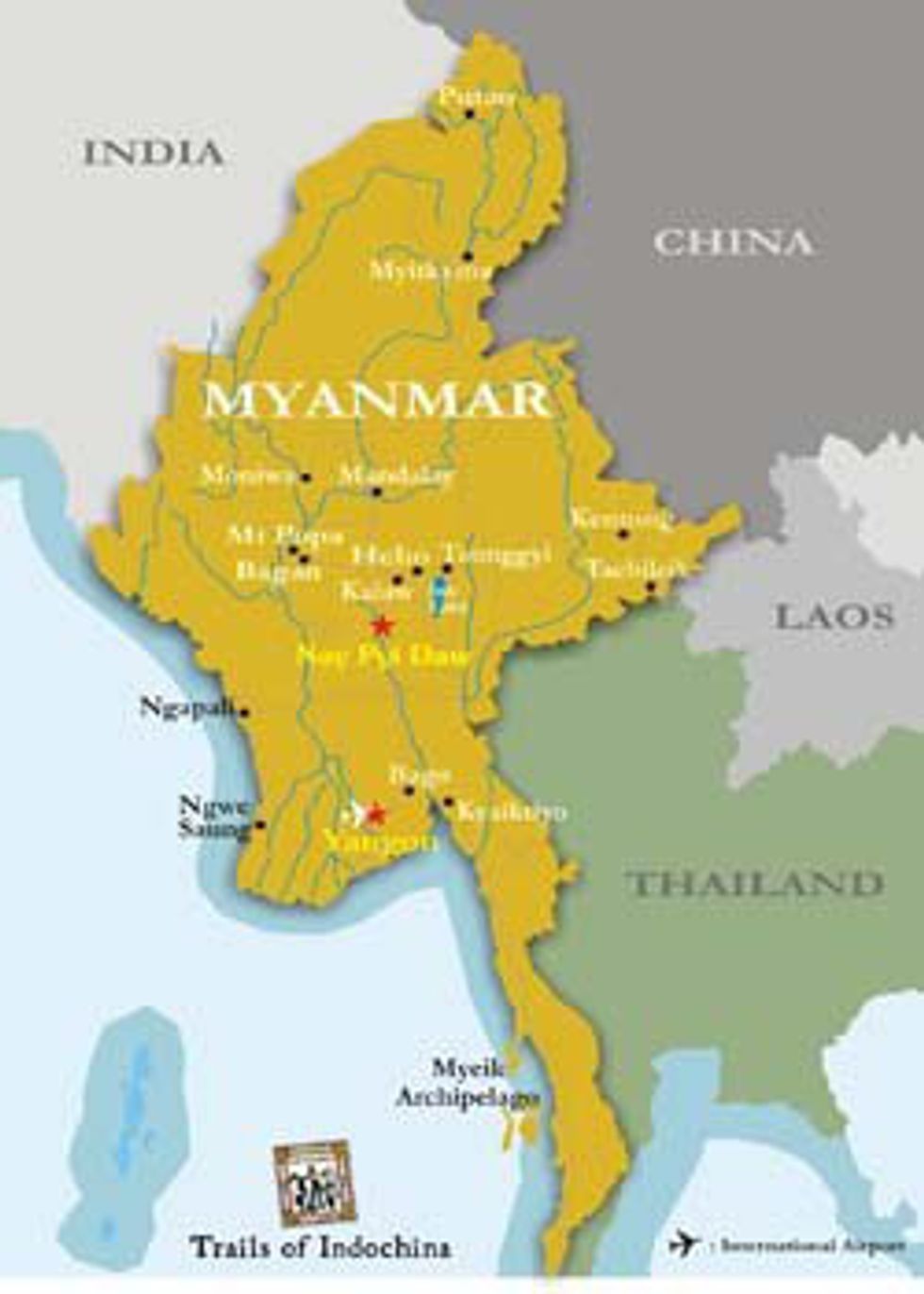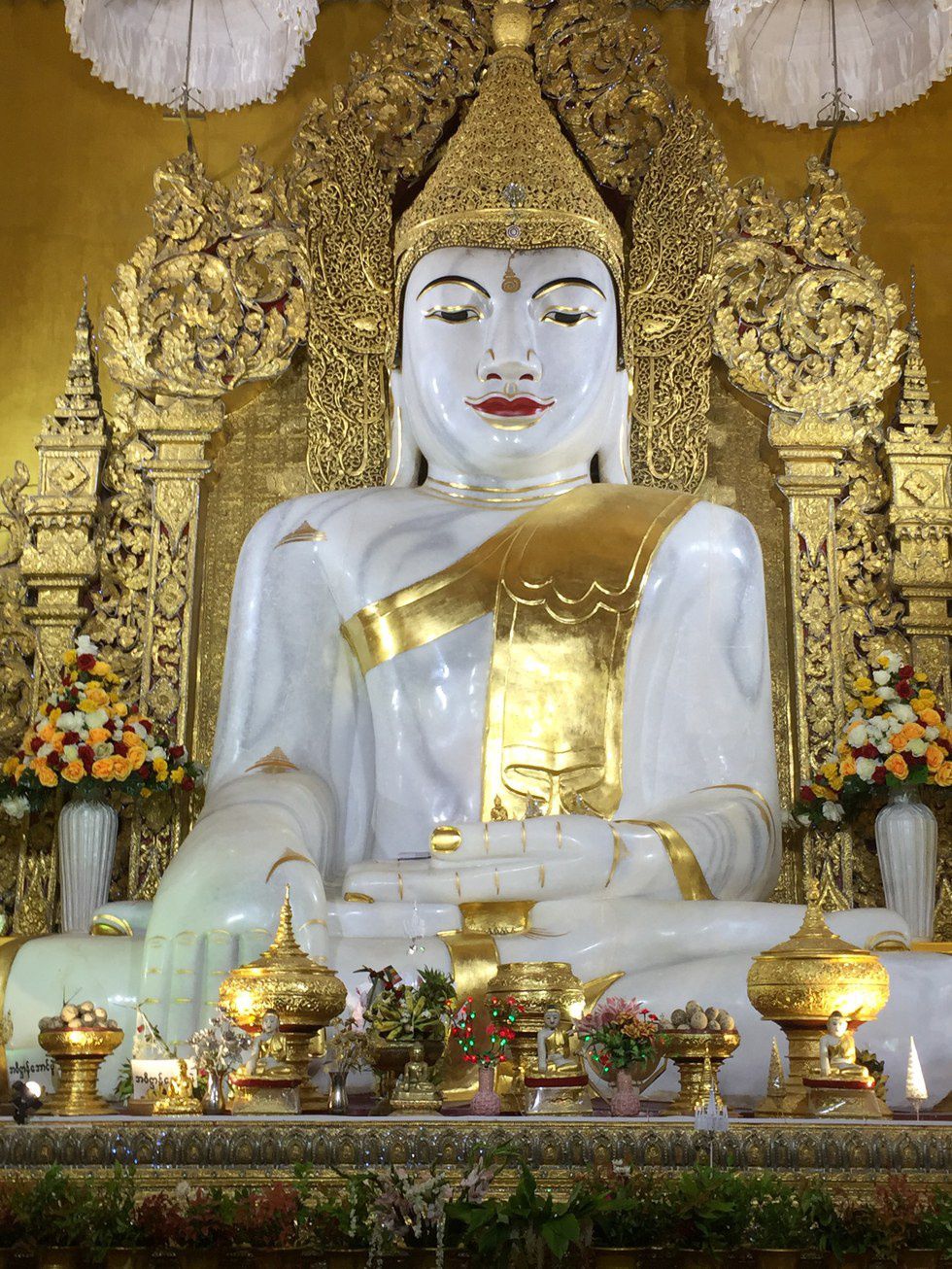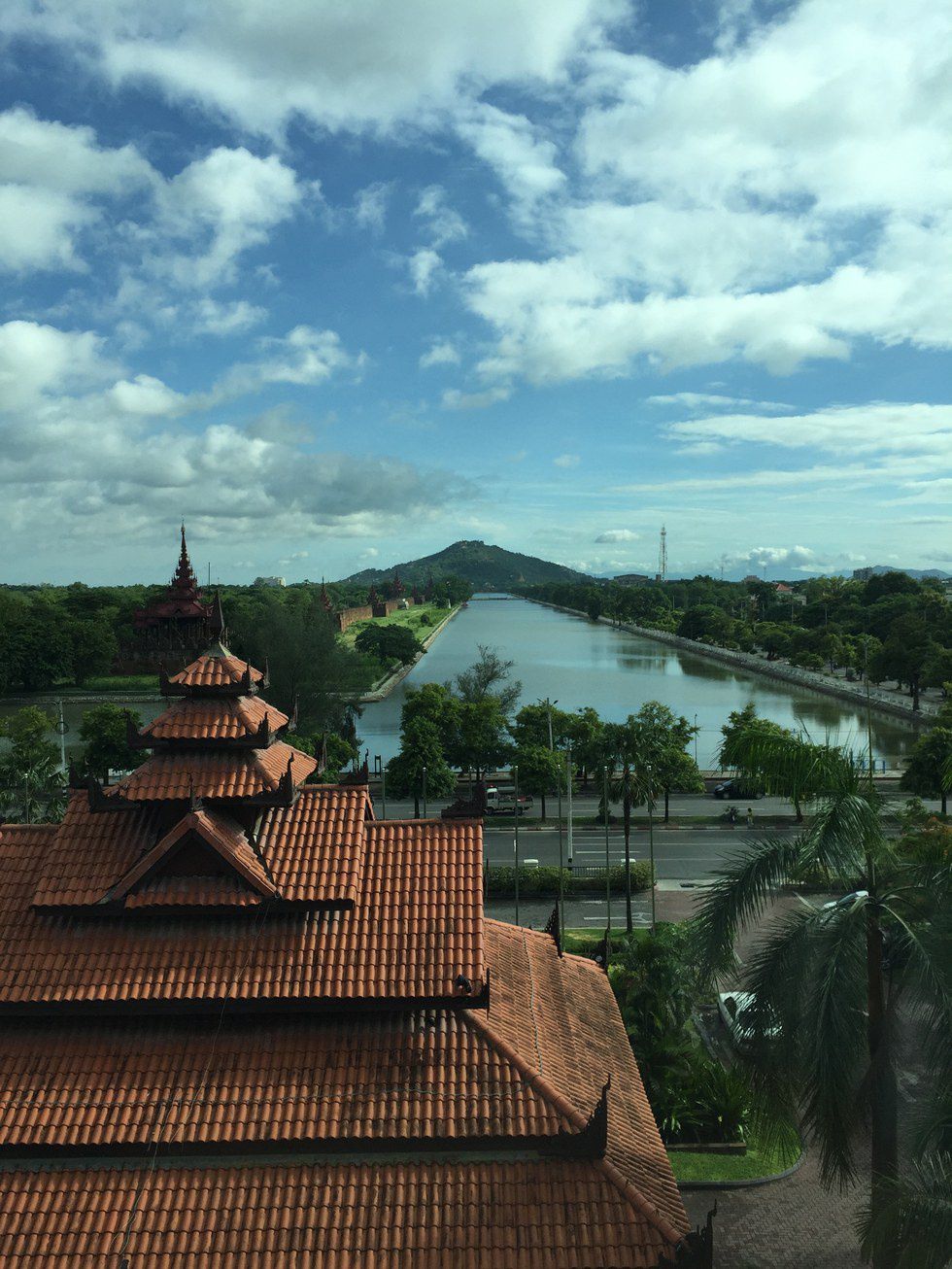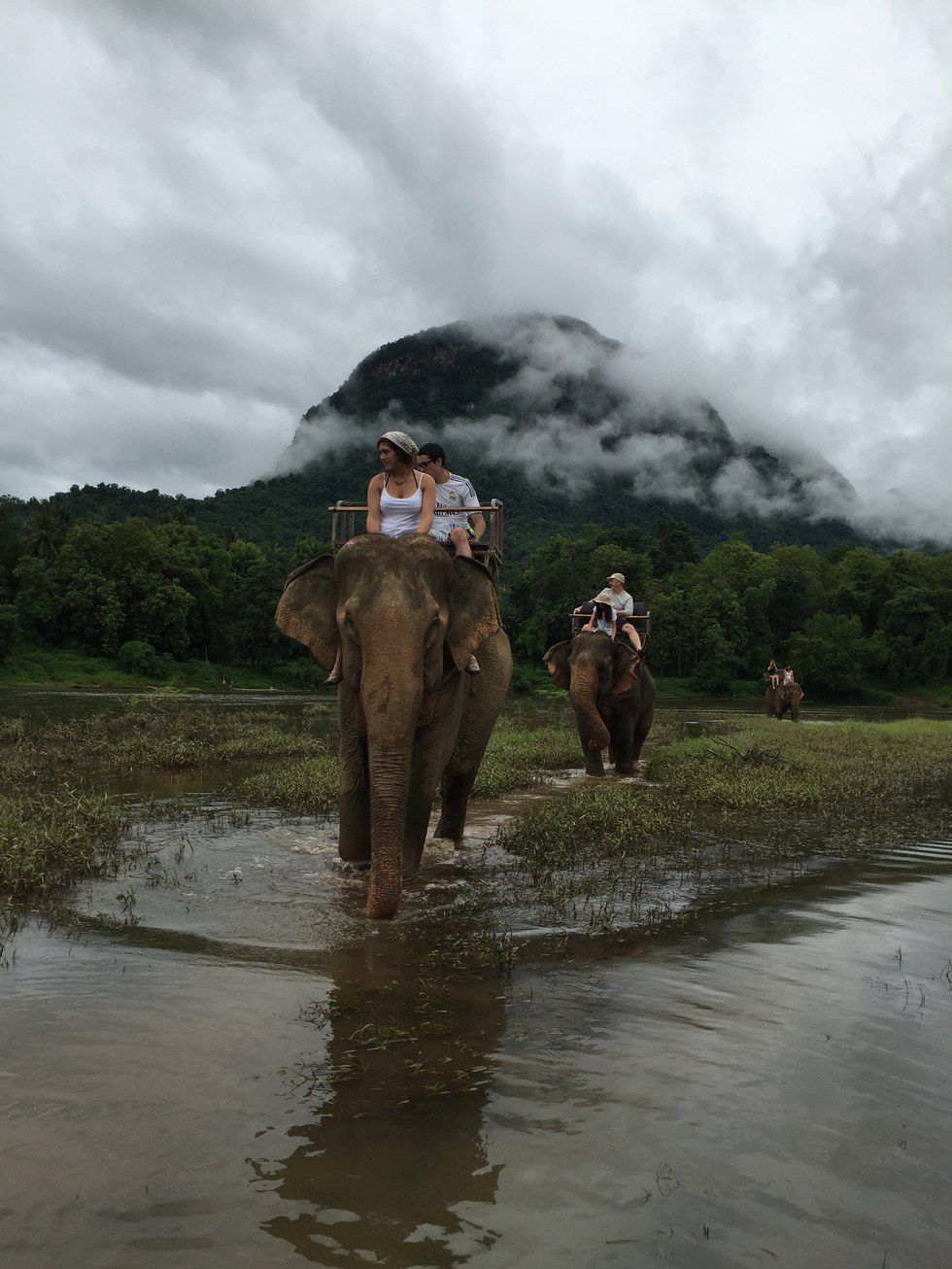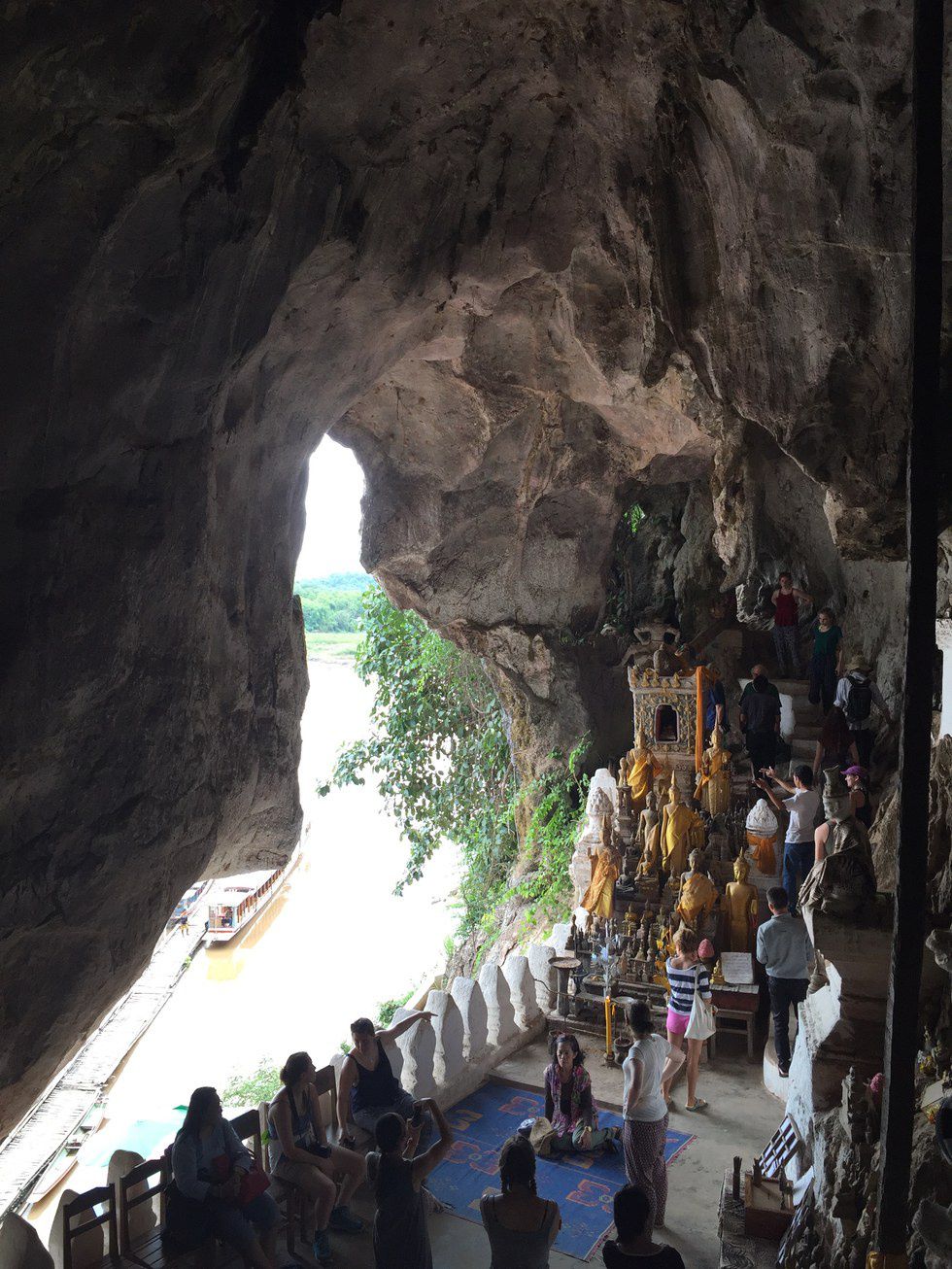For over two weeks this summer, I explored an area of the world that most foreigners will never visit.
In fact, if you can just correctly identify Thailand, Laos, Cambodia and Myanmar on this map (without cheating), then you should take great pride in your geopolitical savviness.
If you couldn't, don't worry about it, neither could I. Truthfully, that lack of knowledge, that mystery, is probably what drew my family to this wonderfully beautiful corner of the world.
Thailand
This intriguing country was not meant to be a main attraction on our trip, yet we ended up spending more time here than originally planned. Bangkok is a goliath of a city, modern and vast, with a population of around 6.5 million. Our first night was spent here, at the beautiful Le Meridien Hotel. Though oppressively humid and hot, the people were anything but -- from the hotel staff to vendors on the street, we were treated as honored guests, valued newcomers. The kindness I received from every Thai person made me feel at home, even as 20+ hours of jet-lag set in. It was with a heavy heart that we left Thailand after only one day, but fate decreed we would return. After missing a flight in Laos, we were forced to fly back to Bangkok to continue our trip. I will never forget flying above this country, as metropolises of metal faded to plains of rice fields. Beauty may be in the eye of the beholder, but I dare anyone to not behold the wonder that is Thailand.
Below is Bangkok from above. Haha, get
Below is my room the first night, at the Le Meridien. It was nice.
Myanmar
Myanmar, or Burma before the military dictatorship, was our first stop in Southeast Asia. For seven days, my family and I explored this unique country. To be sure, Myanmar is a poor place. Life is hard. Decades under military rule have isolated the people from the outside world, and the eagerness of our tour guides for information, any information, was one part flattering and three parts saddening. Life seemed stuck in the 1970s and 1980s, with Soviet era concrete buildings and hardly any cars newer than 15 years. Myanmar's one highway led us past vast swathes of barren land, dotted with small tin huts and roadside fruit stands. Nowadays, Myanmar is a semi-Republic, although military influence is still very strong -- the democratically elected president is being barred from serving because she was once a critic of military rule.
As a side note, I've always felt it does a disservice to nations such as Myanmar when we ignore their plights in the name of "respect" or "politeness." One of the most memorable parts of traveling around the world, as I have, is seeing just how tough life is for so, so many people. It awakens something deeply human inside of me, because not only do I gain immense appreciation for my life's luxuries, but I make invaluable connections with other people, people who may not and most likely never will have what material wealth I have, but people who share my same emotions, breathe my same air, and feel my same sun. There's something indescribably humbling about that.
And indeed, for all Myanmar's modern shortcomings, it's vast natural wealth, it's history, and it's people humbled me to my core. I explored crowded markets, where all manner of foods and people were gathered. I admired incredible landscapes, from volcanoes and forests to plains and valleys, colossal mountains and mighty rivers. I learned a great deal about Buddhism, Myanmar's largest religion, and traveled from temple to temple, pagoda to pagoda, taking in Myanmar's rich history and impressive architecture. Every day was a wonder because from so little, Myanmar's people had built, painted, sculpted and written some of the most amazing things I've ever seen in my life. I can honestly say that, while heading back to the hotel every day was a beautiful thing (it was god awful hot), it was even more exciting heading out the next day.
Below is one of the many Buddha statues that fill Myanmar's temples. Usually carved from one piece of stone, like this one, they are adorned with solid gold and gold leaf.
Below is a view of the King's Palace in Mandalay, Myanmar's old capital city, from our hotel. This palace is surrounded by a square wall 2 km long on each side.
Below is just a fraction of the thousands of pagodas resting at Bagan, Myanmar, the largest concentration of pagodas in the world. This vast plain, dotted with temples dating back to the early 1000s, was unfortunately denied UNESCO World Heritage because the military government destroyed many to build a hotel right in the middle (which is where we stayed, haha...).
Laos
Our next stop was Laos, a mysterious country with an even more intriguing history. In just three or four days, I got a taste of a wonderfully nuanced peoples and culture that, although close geographically, are world's apart from Myanmar. Our villa was situated on the Mekong river, a waterway of historical importance during the Vietnam war. Violence often spilled over into neutral Laos, and many an American soldier owe Laotians their lives for assisting in scouting the dense, wet forests along the river bank for Vietcong. The help we received from these peaceful people, and the dangers we left them in the form of unexploded mines, is one of the least known aspects of that war.
In fact, much of Laos would seem "unknown." A stark contrast from Myanmar's dry plains, Laos was a vibrant, rainy land, riddled with foggy hills and not that far away from what you may call "the wild." Luang Prabang, the city in which we stayed, was nestled in a tropical valley surrounded by rice fields. Every morning, the sun would brilliantly rise up into the sky, its rays illuminating the early morning dew. With Buddhism still the major religion, we again visited a multitude of temples and pagodas, but these had their own unique character, slightly different, but just as amazing. But perhaps the coolest thing about Laos were, of course, its elephants. Having never seen on in real life before, the opportunity to not only do so, but to ride one, was a once in a lifetime wonder. We learned all about elephants, how long they live (up to 80 years), what they eat, how to talk to them, and, most importantly, how much human progress has hurt them. Elephant populations have dwindled in Laos, as they have everywhere, and it was truly an honor to be among such impressive creatures.
Laos for me was an eye-widening experience, as well as eye-opening. Both Laos and Myanmar are lands easily forgotten, places where the struggle of life complements the incredible feats of culture and engineering that struggle has wrought. But in Laos, I never ceased to be surprised. On a whim, we traveled two hours down the Mekong and came to a serious of thousand-foot marble cliffs. Etched along them by the river in the rainy season were a series of caves, vast and beautiful and filled with Buddha statues and offering sites. In a small, unassuming little hut just outside these caves, local women wove the prettiest tapestries I have ever seen. The beauty of the human spirit, I learned in Laos, is that it can manifest itself anywhere. If I could go back to that former French colony that is Laos, I would in a heartbeat.
Below is a view of the Mekong from our villa, a large international river that at some points flows in different directions on opposite banks.
Below is my whole family on our elephants, whose names I unfortunately cannot remember :( At this reserve, there were 12 elephants rescued from illegal logging operations, and they use donations to buy more elephants from locals and save them from lives of hard labor.
Below is a view from inside the Mekong caves. During high season, the number of tourists can be so large that the entrance line reaches down to the boats.
Cambodia
The Kingdom of Cambodia is best described as a mix of the previous three countries on our trip. It had the level of prosperity and development of Thailand (if not a little less so), the lush forests of Laos, and the climate of Myanmar. However, Cambodia does indeed have its very own, very unique history, as well as the most impressive architecture I saw on this trip.
For four years, the Khmer Rouge, Cambodia's communist party, ruled the country, and in that time committed one of the worst mass killings in history. Their willingness to maintain power left no one safe. Up to two million people were murdered, men, women, and children alike, while many ancient monuments were damaged or destroyed. The methods used to torture and kill everyone from babies to the elderly are immortalized in the psyches of the Cambodian people, as our tour guide would often take breaks from talking about the temples in order to explain some of this more recent, more brutal history. In their attempts to move people from cities to farms, the Khmer Rouge caused countless deaths by starvation, forced disappearance, and flat out murder. It is important to Cambodians that this history be remembered, so that it is never repeated again.
Learning about this dark period in Cambodia's past did, however, help me appreciate the beauty this country has to offer now. The largest, most impressive temple in the world, Angkor Wat, was a sight to see, an immense complex of stone that stretches our comprehension of what ancient peoples were capable of building. But there was more -- nestled in the deep forests are countless other temples, all stone, all enormous in size and all beautiful. The people in Cambodia were perhaps the kindest on our trip, willing to engage with us foreigners as much as the language barrier would allow. We spent the last few days holed up at a very nice resort, but I wish more than anything I had explored more of what Cambodia had to offer. Our very last night, we saw a Cambodian circus with the very best gymnasts I have ever watched. I perhaps enjoyed Cambodia more than any other nation on our trip, because it had most of the one thing I want in a vacation: endless memories.
Below is Angkor Thom, a smaller temple within the Angkor Wat complex, but in many ways even more impressive.
Below is a picture of ME! at Angkor Wat, obviously not impressed. The site measures more than 160 hectares, which, for comparison, is about the size of 240 soccer fields.
Below is a view of an unnamed temple deep in Cambodia's jungle. Nature has overtaken much of these temples, but they are still wonderfully impressive.
Out of all of this, however, out of all I experienced, saw, ate, smelled, touched, all the people I talked with and laughed with, one memory remains burned in my mind.
Driving back to the hotel after visiting a volcano in Myanmar, we passed through a very rural lowland plain, with only a few palm trees spread throughout the dry soil. I was looking out the window, but not really looking; I had my headphones in, Beyonce was playing, I was thinking about the hotel pool. As we crested over a hill, I saw a figure kneeling down beside the road. As we got closer, I saw it was a woman. Old, crouched over, no shoes, feet dug into the dirt, skin dark as leather, wearing a wide-brimmed hat and a tattered dress, motionless in the direct, scorching sunlight. Behind her was what I assume was her house, a hut built out of palm tree leaves, barely big enough for one person. There were no other roads for ten of miles, no other buildings for twice that distance. Our van slowly passed and I caught a long glimpse of her, and her of me.
And she smiled. And she waved.
Who would have known that a little old lady in Myanmar would be the one to teach me humanity?




